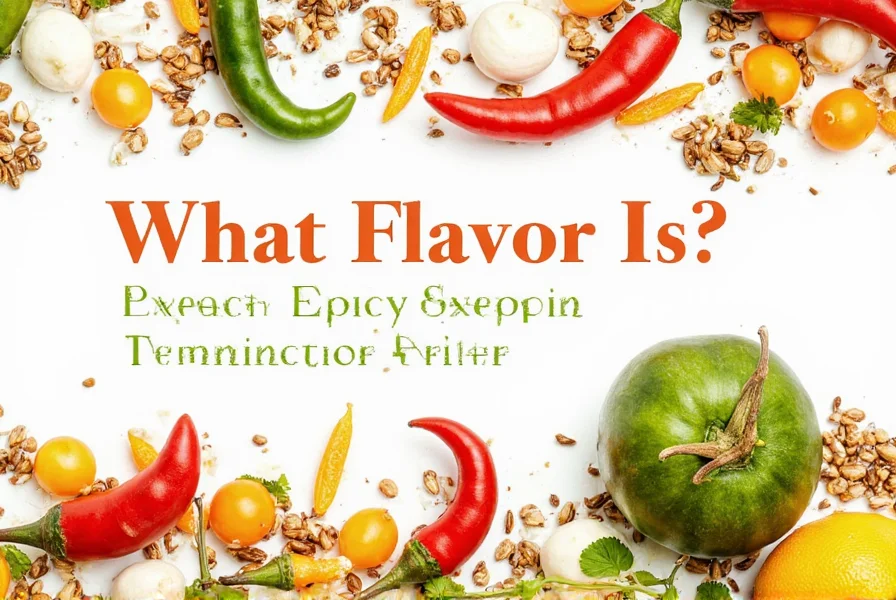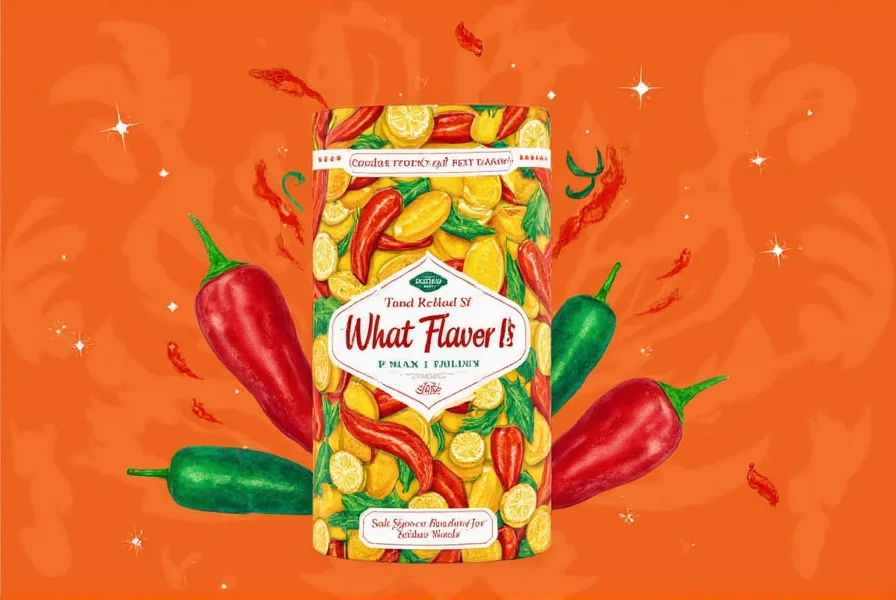Table of Contents
What is Flavor? A Scientific Definition
Flavor is the sensory experience of food created by the combination of taste, smell, texture, temperature, and other factors. It is not merely what your taste buds detect on your tongue, but a complex integration of multiple sensory inputs processed by your brain. According to the Journal of Food Science, flavor is defined as "the complex perception of a food or beverage that results from the integration of taste, smell, and trigeminal sensations."

The Core Components of Flavor
Flavor is composed of several key elements that work together to create the complete sensory experience:
- Taste: The five basic tastes detected by taste buds on the tongue - sweet, salty, sour, bitter, and umami.
- Aroma: Volatile compounds detected by the olfactory system, which contribute significantly to flavor perception. Up to 80% of what we perceive as flavor comes from smell.
- Texture: The physical properties of food that affect how it feels in the mouth, including smoothness, crunchiness, and viscosity.
- Trigeminal sensations: Chemical sensations like heat from chili peppers or coolness from mint, detected by the trigeminal nerve.
| Component | Description | Role in Flavor |
|---|---|---|
| Taste | Detection by taste buds on the tongue | Provides basic taste sensations: sweet, salty, sour, bitter, umami |
| Aroma | Detection by olfactory receptors in the nose | Contributes up to 80% of flavor perception |
| Texture | Physical properties of food | Affects mouthfeel and overall eating experience |
| Trigeminal sensations | Detection by trigeminal nerve | Provides sensations like heat, coolness, and tingling |
The Science Behind Flavor Perception
Flavor perception is a complex neurological process. When you eat, sensory information from taste buds, olfactory receptors, and trigeminal nerves is sent to the brain's gustatory cortex and other regions. The brain integrates these signals to create the perception of flavor.
According to research published in Nature Scientific Reports, flavor perception involves multiple brain regions working together, including the insula, orbitofrontal cortex, and amygdala. This integration explains why flavor is more than just taste - it's a holistic sensory experience.

Key Research on Flavor Science
Modern flavor science has revealed fascinating insights:
- A 2019 study in Food Chemistry found that flavor perception is influenced by cultural background, with different cultures perceiving the same food differently based on learned associations.
- Research from the National Institutes of Health shows that flavor perception can be altered by psychological factors, such as expectations and emotions.
- Studies on flavor chemistry have identified thousands of volatile compounds that contribute to specific flavors, with each food having a unique chemical fingerprint.
Frequently Asked Questions
What is the difference between taste and flavor?
Taste refers specifically to the five basic sensations detected by taste buds: sweet, salty, sour, bitter, and umami. Flavor is a broader concept that includes taste plus aroma, texture, temperature, and other sensory inputs. While taste is limited to the tongue, flavor is created in the brain by integrating multiple sensory inputs.
Why does smell play such a big role in flavor?
Up to 80% of what we perceive as flavor comes from smell. When you eat, volatile compounds from food travel up the back of your throat to your nasal cavity, where they're detected by olfactory receptors. This is why food seems to have less flavor when you have a stuffy nose.
Can flavor be scientifically measured?
While the subjective experience of flavor can't be fully quantified, many components can be measured scientifically. Food scientists use instruments like gas chromatography to identify and measure aromatic compounds, pH meters for acidity, and specialized panels to evaluate taste profiles. However, the complete flavor experience involves psychological factors that vary from person to person.
Conclusion: Understanding Flavor Science
Flavor is not just what you taste - it's a complex sensory experience created by the integration of multiple inputs. By understanding the science behind flavor, you can appreciate how food affects your senses and make more informed choices about what you eat. Whether you're a food scientist, chef, or simply curious about what makes food taste the way it does, this knowledge enriches your culinary experience.











 浙公网安备
33010002000092号
浙公网安备
33010002000092号 浙B2-20120091-4
浙B2-20120091-4